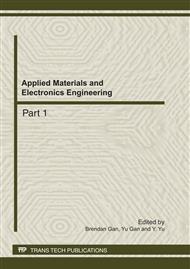p.200
p.204
p.209
p.213
p.218
p.222
p.226
p.230
p.237
Analysis of Tunnel Rock’s Dynamic Stress with Input of Different Peak Ground Motions
Abstract:
The changes of tunnel rock stress caused by dynamic load is a hot point in geotechnical engineering. The paper introduces seismic methods of seismic design codes in China. The paper select state road 318(Huangcaoping part)as an example. Using finite difference software to analyze the rock pressure changes around the lining-tunnel with different seismic inputs. Comparing the results the rock static pressure and find the relative amplification factor between dynamic pressure and static pressure. Based on the results of analysis, we can obtain the following conclusions: As the peak ground motion acceleration increases, the peak value of tunnel rock increases, too. The amplifications change in a small range. The oblique parts of tunnel are the weakest parts of the tunnels. In different areas, the amplifications change a lot. The maximum ones are in the area of oblique.
Info:
Periodical:
Pages:
218-221
Citation:
Online since:
October 2011
Authors:
Keywords:
Price:
Сopyright:
© 2012 Trans Tech Publications Ltd. All Rights Reserved
Share:
Citation:


